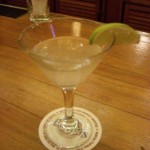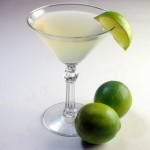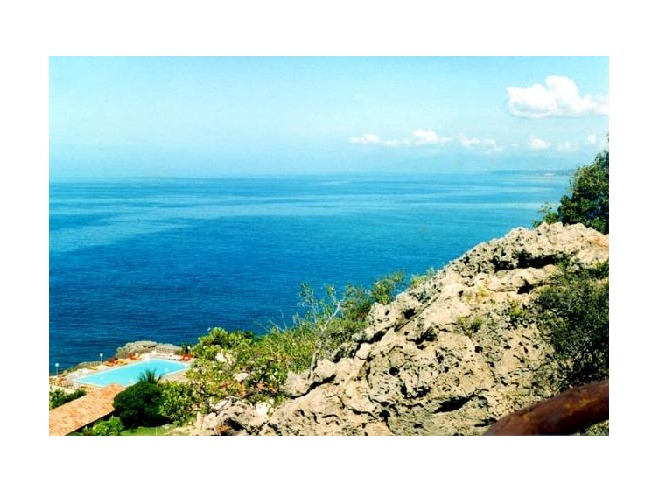MI MEJOR DAIQUIRI CUBANO
50 ml de ron cubano ligero
25 ml de jugo de limón fresco
Jarabe de azúcar 15 ml, o su equivalente en forma granulada.
Agitar con hielo, y luego colar en un vaso de cóctel. Adorne con una rodaja de limón, que ha sido cortado y luego se coloca en el borde del vaso.
Origen
El nombre de Daiquiri es también el nombre de una playa cerca de Santiago de Cuba, y una mina de hierro en esa zona, y es una palabra de origen taíno. El cóctel fue inventado alrededor de 1900 en un bar llamado Venus en Santiago, a unos 23 millas (37 kilómetros) al este de la mina, por un grupo de ingenieros de minas de América. Entre los ingenieros estuvieron presentes Jennings Cox, gerente general de los españoles Co. Americano del Hierro, Francisco J. Linthicum, C. Manning Combs, George W. Pfeiffer, De Berneire Whitaker, C. Proctor Merritt Holmes y O. Persing. Aunque persisten las historias que Cox inventó la bebida cuando se le acabó la ginebra, mientras que entretener a los invitados de América, la bebida evolucionado de forma natural debido a la prevalencia de la lima y el azúcar.
Originalmente la bebida se servía en un vaso alto lleno de hielo picado. Una cucharadita de azúcar se vertió sobre hielo y el jugo de la de uno o dos limones se exprimió sobre el azúcar. Dos o tres onzas de ron completado la mezcla. El vidrio esmerilado que entonces era removiendo con una cuchara de mango largo. Más tarde, el Daiquirí evolucionado para ser mezclado en una coctelera con los mismos ingredientes pero con hielo raspado. Después de una agitación a fondo, se vertió en un vaso flauta refrigerados. Un artículo del 14 de marzo 1937 edición de The Miami Herald, así como la correspondencia privada de JF Linthicum confirmar la receta y la historia temprana.
El consumo de la bebida se mantuvo localizado hasta 1909, cuando el almirante Lucius W. Johnson, un oficial de Marina de los EE.UU. médica, trató de bebida de Cox. Johnson, posteriormente, introducido en el Ejército y la Marina del Club en Washington, DC, y los bebedores del daiquirí aumentado en el espacio de unas pocas décadas. El daiquirí fue una de las bebidas favoritas del escritor Ernest Hemingway y el presidente John F. Kennedy.
Daiquiri Hemingway
2 oz ron blanco (al igual que DonQ Cristal)
.75 Oz jugo de lima
1 cucharadita de marrasquino
1 cucharadita de jugo de pomelo
1 cucharadita de azúcar
Agitar con hielo y verter en una copa de cóctel helada. Sirva frappe (hielo triturado apilado en el vidrio)
La bebida se hizo popular en la década de 1940. En tiempo de guerra de racionamiento hecho whisky, vodka, etc, difícil de encontrar, sin embargo, debido a la política del buen vecino de Roosevelt (que abrió las relaciones comerciales y de viajes con América Latina, Cuba y el Caribe), el ron era fácil de obtener. La Política del Buen Vecino (también conocido como ‘El programa de Panamericana “), ayudó a hacer de América Latina parecen de moda. Las bebidas lo tanto, a base de ron (una vez mal visto como el dominio de los marineros y de abajo-y-outs), también se puso de moda, y el Daiquirí visto un tremendo aumento en popularidad en los EE.UU..
La receta básica para un Daiquirí es también similar a los marineros británicos bebían grog a bordo del barco a partir del 1740. En 1795 la Royal Navy ración diaria de ron ponche contenido, el agua, ¾ de onza de jugo de limón, y 2 onzas de azúcar. Esta era una bebida común en todo el Caribe, y tan pronto como el hielo llegó a estar disponible este se incluyó en lugar del agua. Historia de Jennings Cox es sin duda muy popular y tal vez fue el responsable de la denominación de la bebida, pero en cuanto a la creación de lo que estaba a unos 150 años de retraso.
Wiki / InternetPhotos / YouTube / TheCubanHistory.com
Mi Mejor Daiquiri Cubano.
The CUban Hisory, Hollywood.
Arnoldo Varona, Editor.
FAMOUS DRINKS: My Best Cuban Daiquirí.
50ml Light Cuban Rum
25ml Fresh Lime Juice
15ml Sugar Syrup, or the equivalent in granulated form.
Shake with ice, and then strain into a cocktail glass. Garnish with a lime wedge, which has been cut and then placed onto the rim of the glass.
Origin
The name Daiquirí is also the name of a beach near Santiago, Cuba, and an iron mine in that area, and it is a word of Taíno origin. The cocktail was supposedly invented about 1900 in a bar named Venus in Santiago, about 23 miles (37 km) east of the mine, by a group of American mining engineers. Among the engineers present were Jennings Cox, General Manager of the Spanish American Iron Co., J. Francis Linthicum, C. Manning Combs, George W. Pfeiffer, De Berneire Whitaker, C. Merritt Holmes and Proctor O. Persing. Although stories persist that Cox invented the drink when he ran out of gin while entertaining American guests, the drink evolved naturally due to the prevalence of lime and sugar.
Originally the drink was served in a tall glass packed with cracked ice. A teaspoon of sugar was poured over the ice and the juice of one or two limes was squeezed over the sugar. Two or three ounces of rum completed the mixture. The glass was then frosted by stirring with a long-handled spoon. Later the Daiquirí evolved to be mixed in a shaker with the same ingredients but with shaved ice. After a thorough shaking, it was poured into a chilled flute glass. An article in the March 14, 1937 edition of the Miami Herald as well as private correspondence of J.F. Linthicum confirm the recipe and early history.
Consumption of the drink remained localized until 1909, when Admiral Lucius W. Johnson, a U.S. Navy medical officer, tried Cox’s drink. Johnson subsequently introduced it to the Army and Navy Club in Washington, D.C., and drinkers of the daiquirí increased over the space of a few decades. The daiquirí was one of the favorite drinks of writer Ernest Hemingway and president John F. Kennedy.
Hemingway Daiquiri
2 oz White Rum (like DonQ Cristal)
.75 oz Lime Juice
1 tsp Maraschino
1 tsp Grapefruit Juice
1 tsp Sugar
Shake with ice and strain into a chilled cocktail glass. Serve frappe (crushed ice piled high in glass)
The drink became popular in the 1940s. Wartime rationing made whiskey, vodka, etc., hard to come by, yet because of Roosevelt’s Good Neighbor policy (which opened up trade and travel relations with Latin America, Cuba and the Caribbean), rum was easily obtainable. The Good Neighbor Policy (also known as ‘The Pan-American program’), helped make Latin America seem fashionable. Consequently, rum-based drinks (once frowned upon as being the domain of sailors and down-and-outs), also became fashionable, and the Daiquirí saw a tremendous rise in popularity in the US.
The basic recipe for a Daiquirí is also similar to the grog British sailors drank aboard ship from the 1740s onwards. By 1795 the Royal Navy daily grog ration contained rum, water, ¾ ounce of lemon or lime juice, and 2 ounces of sugar. This was a common drink across the Caribbean, and as soon as ice became available this was included instead of the water. Jennings Cox’s story is certainly a popular one and maybe he was responsible for the naming of the drink, but as far as creating it he was about 150 years late.
Wiki / InternetPhotos / YouTube / TheCubanHistory.com
Mi Mejor Daiquiri Cubano.
The CUban Hisory, Hollywood.
Arnoldo Varona, Editor.



 FAMOUS DRINKS: My Best Cuban Daiquirí. (Photos) * * MI MEJOR Daiquirí Cubano. (Fotos)
FAMOUS DRINKS: My Best Cuban Daiquirí. (Photos) * * MI MEJOR Daiquirí Cubano. (Fotos)



